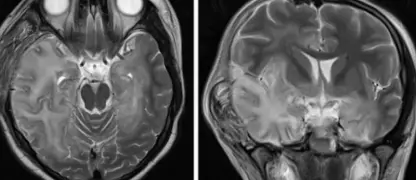Venezuelan Equine Encephalitis is a viral disease affecting horses and humans, causing fever, neurological issues, and potential outbreaks. Early detection and prevention are crucial.
What are the main causes of Venezuelan Equine Encephalitis?
- The virus spreads primarily through mosquito bites, especially in areas with dense vegetation and poor mosquito control.
- Infected horses can act as reservoirs, transmitting the virus to humans and other animals via mosquitoes.
- Environmental factors like heavy rainfall and stagnant water increase mosquito populations, raising the risk of outbreaks.
Key symptoms of Venezuelan Equine Encephalitis to watch for
- High fever, severe headache, and muscle aches often appear within a few days of infection.
- Neurological signs such as confusion, seizures, and sensitivity to light may develop in severe cases.
- Fatigue, nausea, and vomiting are common early symptoms indicating viral infection progression.

>>>Refer to this immediately: Understanding western equine encephalitis risks today
How can you prevent Venezuelan Equine Encephalitis effectively?
- Use insect repellents, wear long-sleeved clothing, and avoid outdoor activities during peak mosquito hours.
- Vaccinate horses in endemic regions to reduce virus reservoirs and limit transmission to humans.
- Eliminate standing water near homes and stables to decrease mosquito breeding sites.
>>>Refer to this immediately: Understanding eastern equine encephalitis symptoms early
Image description of Venezuelan Equine Encephalitis
A microscopic view of the Venezuelan Equine Encephalitis virus shows its spherical structure with surface proteins. Mosquitoes act as carriers, spreading it from infected horses to humans.








>>>Refer to this immediately: West nile fever - Symptoms, causes, and prevention tips
Understanding Venezuelan Equine Encephalitis, its symptoms, and preventive measures helps protect both humans and horses from serious health risks and potential epidemics.






